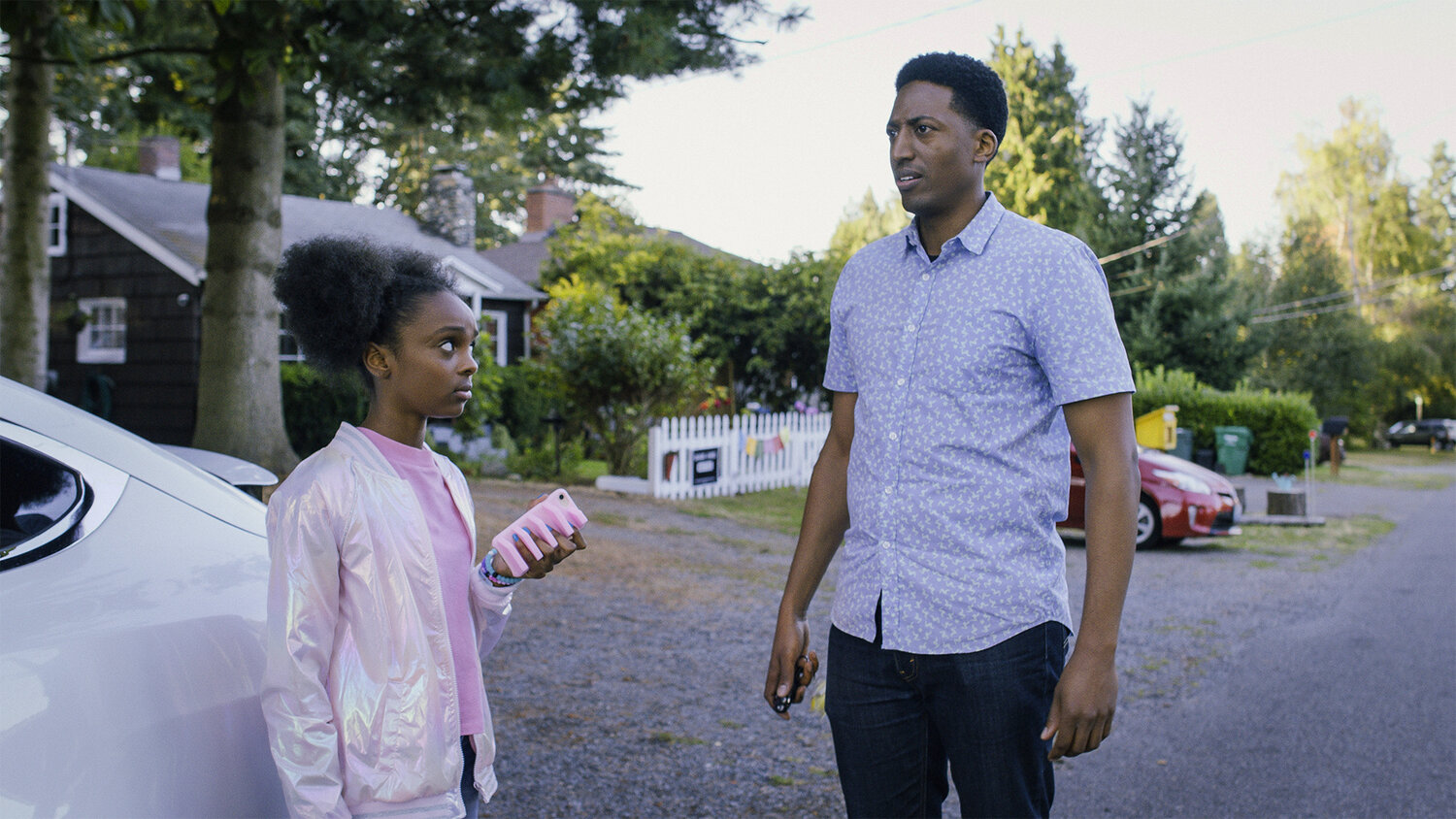
17 Feb Our Right to Gaze: A Defiant Declaration
BY BEDATRI D. CHOUDHURY
OUR RIGHT TO GAZE is a collaborative project of Full Spectrum Features (Chicago), Northwest Film Forum (Seattle), The Luminal Theater (NYC), and Circle Collective (NYC).
cinéSPEAK is honored to be a presenting partner of their incredible short film program. The program will be available to watch through February 28th, 2021. Your ticket purchase directly benefits the filmmakers, this important project, and our cinema. Buy Tickets Here.
A gaze is not just the act of seeing; it is a means of bestowing meaning “…attempts to repress our/black people’s right to gaze had produced in us an overwhelming longing to look, a rebellious desire, an oppositional gaze,” wrote bell hooks in her radical 1992 essay The Oppositional Gaze: Black Female Spectators. It is only fitting that when curator Curtis Caesar John of The Luminal Theater curated a series of short films by Black filmmakers, he decided to name it “Our Right to Gaze: Black Film Identities.”
“It’s a rallying cry. A relentless, resilient insistence on gazing,” says Jason Matsumoto of Full Spectrum Features (Chicago) who, along with Northwest Film Forum (Seattle), The Luminal Theater (NYC), and Circle Collective (NYC), has organized the film program.
Matsumoto’s co-worker, Brian Khan, met Vivian Hua of the Northwest Film Forum at an Art House Convergence conference. This is also where they met John. “We were discussing how there was a need for programs that support BIPOC and LGBTQ creators,” says Hua, “And we talked about mentorship programs but it ended up turning into this short film program.” Circle Collective came on board wanting to engage cinemas that would book and screen short films made by diverse creators. “It was a seamless alignment,” she adds.
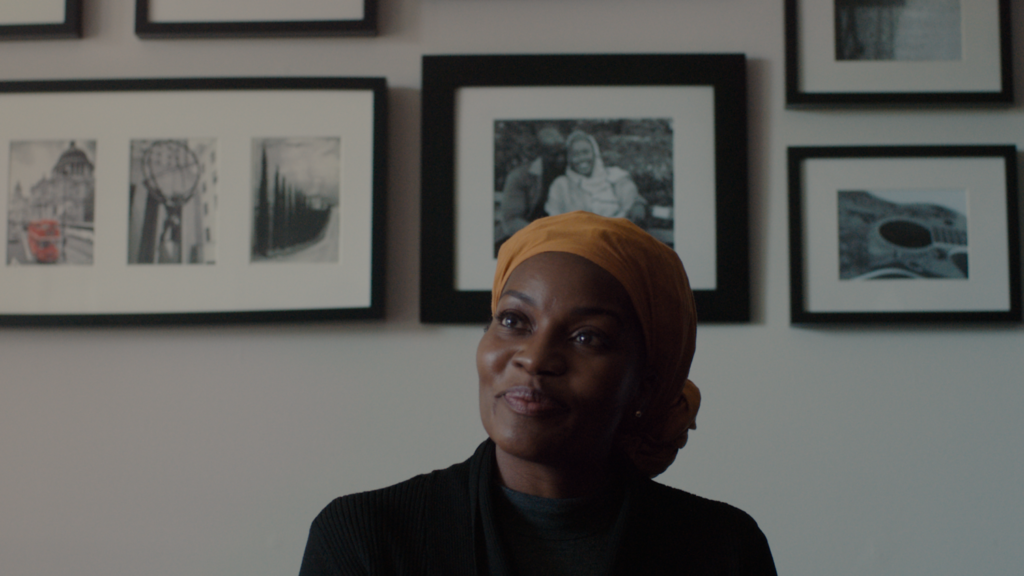
The groups began to convene around August 2020, still grappling with the aftermath of the police murder of George Floyd. It was the time to be self-reflective. “We all run organizations that support and uplift people of color. But [in our case] there’s nobody who is Black, on our team or on our board,” Matsumoto confides. “As we were watching these things happen, yet again, and talking about what we were going to do, we had to look at the larger forms of systemic oppression.” Therein emerged a strong impetus to focus on the financial end of the equation. “It was important for us to think about how we could model financial equity in a different way,” he adds.
Not only did they decide to pay the participating filmmakers to play their films, but they would also engage theatres to screen them virtually. “It doesn’t matter if they’re short films or features. People need to pay the filmmakers to play their films and people need to pay in order to watch them. That should be the standard and we want to make an example out of this,” Hua adds.
Our Right to Gaze is a program of six short films—Lande Yoosuf’s Love in Submission, Toryn Seabrooks’ A Hollywood Party, Lin Que Ayoung’s Nowhere, John D. Hay Jr.’s The Black Banshee, Zora Bikangaga’s Aunty Zariyah, and Ya’Ke’s The Pandemic Chronicles—directed by Black filmmakers at different stages in their careers. “It was important to include filmmakers who identified as women and LGBTQI and to be honest, it wasn’t difficult to find them,” says John, “because there are tons of black women and queer folks out there making fantastic films and have been for a very, very long time.” The films explore love, family structures, and relationships while navigating the realities of abuse, police brutality, and the pandemic—often with a subtle yet artful sense of humor.
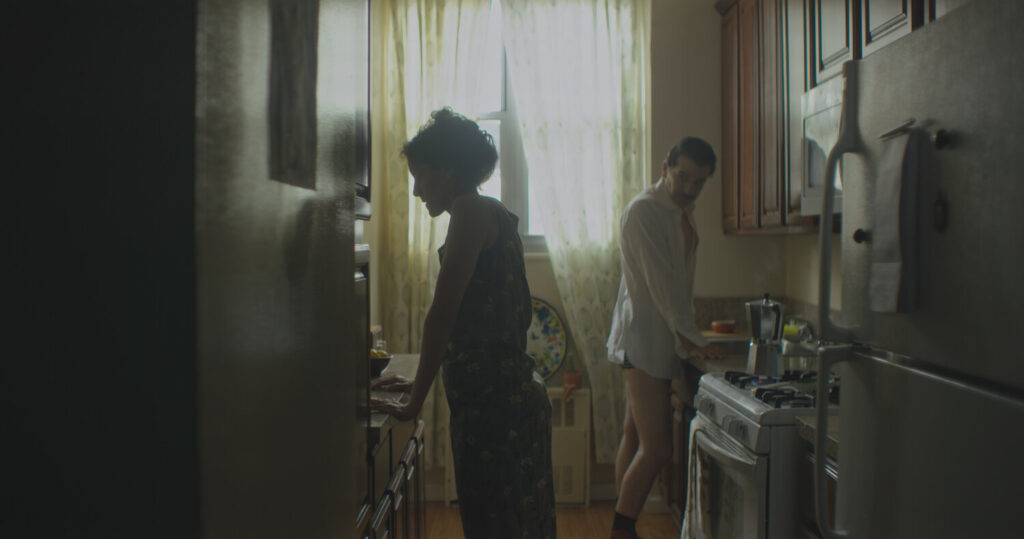
“The beautiful thing about this is that the program isn’t limited to the coasts. There are films from all around the country. That wasn’t necessarily a requirement but I think if we’re going to be doing a national series, whether it’s streaming or not, it would be best to showcase films and filmmakers from across the country,” John adds. For him, the main focus when bringing this program together was on the unique stories that each film narrates. “The quality of a film for me,” he says, “does not lie in the way it looks or feels but the excellence with which it tells a story.” There is no central common theme in the program, but each film complements the others and forms a cohesive narrative that scares you, makes you laugh, and makes you feel sad, all while you gather the courage to stare into the face of what hooks calls the “imperialist white supremacist capitalist patriarchy.”
Audiences who are weary of seeing Black filmmakers approached only for lazy, programmatic standalone themes (which are brought to prominence every Black History Month) are in for a treat because John presents us with a program that completely denounces the identity of the “other” gaze and revels in the boldness of being able to shift the centre of the cinematic gaze as a whole. The program manages to maintain a unique sense of Black joy and humor as it draws attention to the grievous fissures in the equity landscape of the country.
“Our work is to make sure that this kind of content gets played not just during February. The art houses need to figure out how they can engage audiences around this kind of content all year round,” says Matsumoto as Hua nods in agreement. The challenge really is to redefine what people will pay money to watch. It doesn’t just involve a revisiting of the value we assign to stories like these but also calls for a redesigning of what gets considered and prescribed as art. It also means replacing the people who get to sit in their ivory towers and decide, for others, what good art should look like.
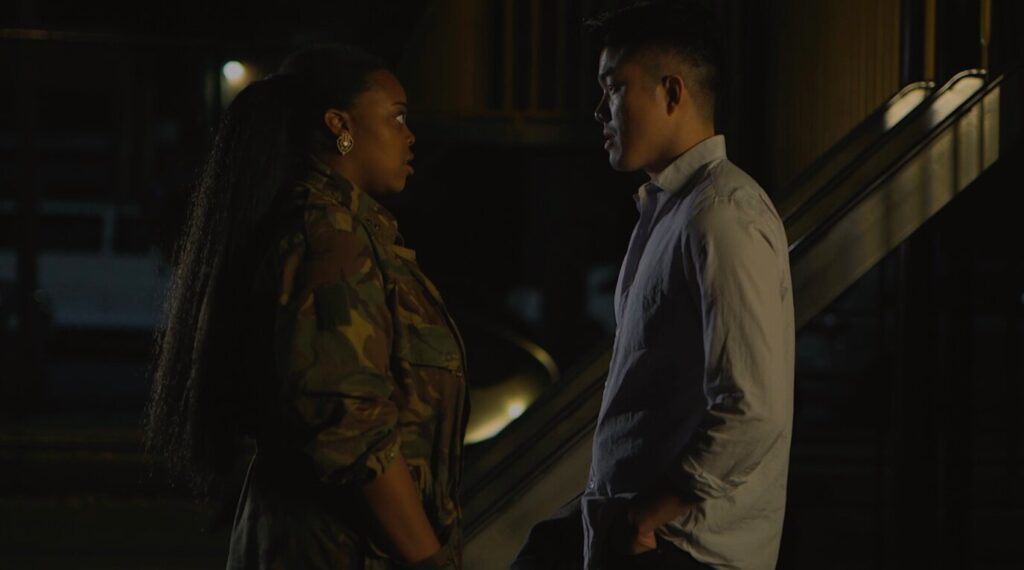
As the series plays in virtual theaters around the country, starting February 14, the organizing team is already busy planning next steps. A mentorship program for the participating filmmakers is in the pipeline because, as Hua says, “there are not that many mentorship labs out there for filmmakers who are developing work. Places like Sundance are few and very competitive.”
The way they envision it, the nature of the program will be decided by the needs of the filmmakers themselves. “We are trying to avoid the model where an expert comes and imparts knowledge to people. The filmmakers are at different stages of their careers and their needs are obviously different,” clarifies Matsumoto. “I would love for the first cohort to continue working with us and they themselves can become part of the program and mentor the next cohort. Building something like that can be really exciting,” he adds.
hooks wrote, “By courageously looking, we defiantly declared: ‘Not only will I stare. I want my look to change reality.’” With Our Right to Gaze, her defiant declaration not just gains strength but also becomes a foundation for the building of a more just and equitable cinema culture. The changing of reality, then, is just a matter of time.
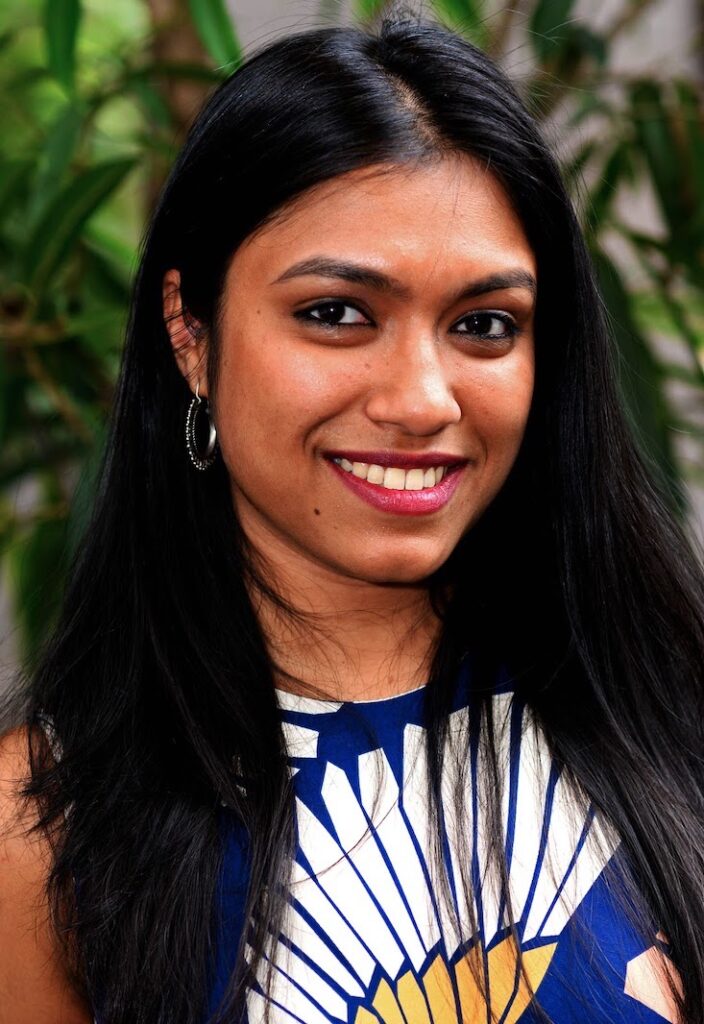
Bedatri D. Choudhury works with documentary films and is a culture journalist. She is a member of cinéSPEAK’s 2021 Editorial Collective. Born and raised in India, she lives in New York City.
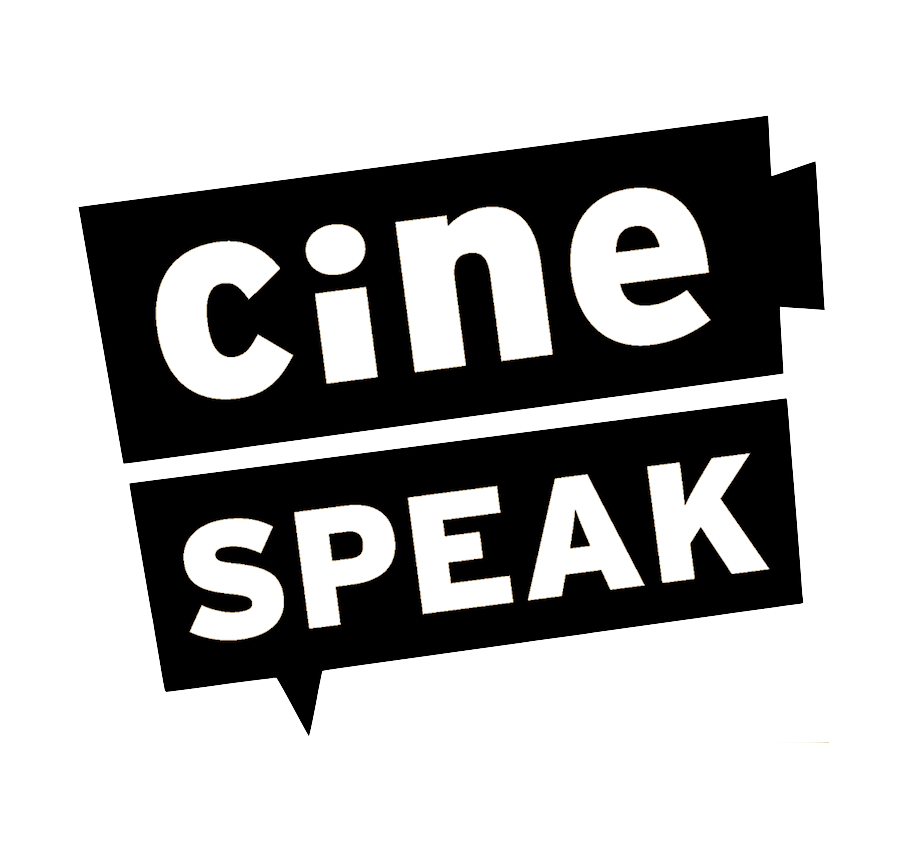
Sorry, the comment form is closed at this time.